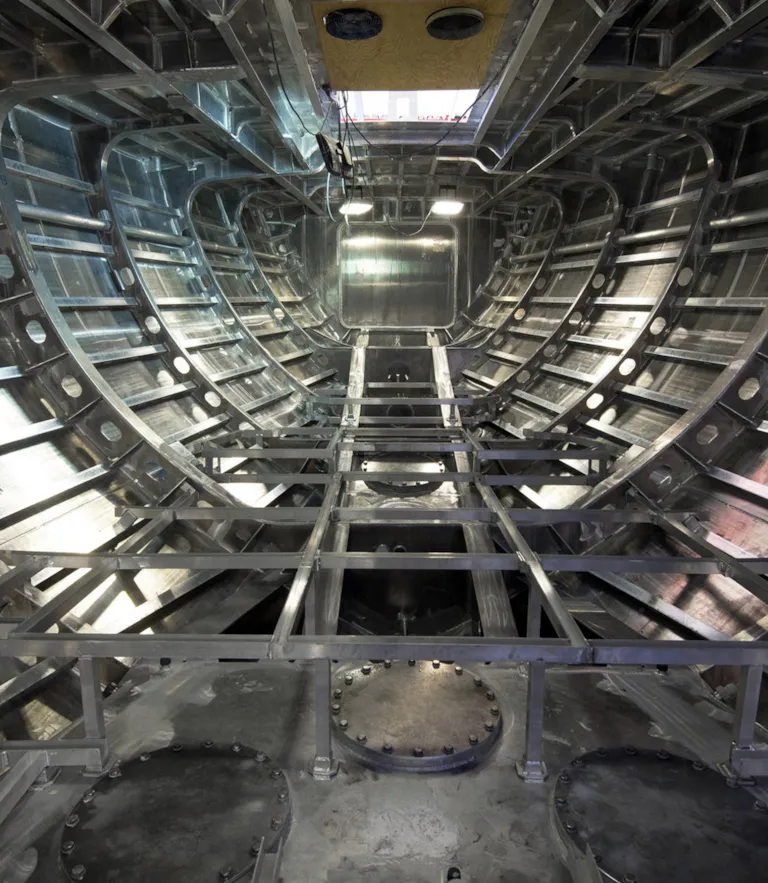Awareness avoids accidents
In a marine accident, every second counts. The DNV GL Emergency Response Service (ERS) supports the crew on board the disabled yacht by preparing a quick assessment of the situation and precise calculations. Frequent drills make sure the system will function in a real incident.
It is exactly 11 o’clock local time (LT) on 26 July 2018. The shipmaster of one of the world’s largest superyachts contacts the Emergency Response Service (ERS) of the classification society DNV GL. The position of the disabled ship is 43° 30’ 24’’ N / 07° 03’ 31’’ E. The superyacht has hit an underwater rock to the north-east of the small island of Saint-Ferréol, just a few nautical miles to the south of the French Mediterranean sea port of Cannes
At DNV GL headquarters in Hamburg, three members of the Duty Team immediately jump up and run to the ERS Situation Room. Equipped with computer banks, monitors and drawing boards, the room serves as an emergency operations centre where the experienced team members can carry out calculations to determine the ship’s damaged stability and residual strength, and assist the shipmaster as well as the land-based staff in developing a plan of action.
The three damage control experts have now arrived at the Situation Room. “In an actual emergency, every second counts in our coordinated efforts to safeguard life, the environment and property,” says Christoph Peickert, Head of Section ERS at DNV GL. On this particular day, however, the situation is not quite as dramatic. “The emergency call from the Cote d’Azur was an unannounced exercise conducted to verify the availability of our services and the required computational performance,” Peickert explains.
Nevertheless, the team in the ERS Situation Room doesn’t waste a second and immediately begins to focus on the given task. “Yacht free-floating again with water ingress and damaged spaces in forward area; fore peak and tank no 1 PS and void space,” was the shipmaster’s radio message. Now it is all about calculating the yacht’s stability in damaged condition and providing advice to the crew to help improve the situation. The first, simplified calculations for assessing the floatability of the damaged craft are expected to be available within 20 to 30 minutes. “The first response shows whether the vessel is in immediate danger (e.g. sinking, capsizing). This evaluation supports the captain in his decision to evacuate or stay on board. This is the most important question, and in an actual emergency it requires an immediate answer,” says Christian Hass, ERS expert at DNV GL with more than twelve years of experience.

Experts are on call 24/7
DNV GL has access to vessel drawings and computerized models of all of the 4,100 vessels registered with the ERS – from pure car & truck carriers (PCTC) to container ships and tankers, through to megayachts. The classification society has been offering its emergency service for 25 years. More than 50 experts form the ERS teams based at DNV GL in Hamburg and Høvik. Relying on their comprehensive experience and ship-class-specific knowledge, they make sure the 24/7 ERS is always properly staffed.
No matter whether it is just a drill or an actual emergency, the experts can always access a so-called digital twin of the disabled vessel on screen to conduct stability and strength calculations. The highly detailed, three-dimensional representation of the vessel, supplemented by current loading condition and damage details, allow the team to simulate various scenarios of the disabled vessel quickly, accurately and reliably. As digitalization progresses, more and more live data will be fed into the digital twin models automatically to further improve their accuracy.
In the meantime the ERS team performs more detailed calculations to help get the ship afloat again as quickly as possible in close communication with the responsible persons on board. It doesn’t take the team long to complete this task. Within an hour, the shipmaster receives a detailed ERS report summarizing the current state of the vessel as well as calculations describing a variety of scenarios. The crew now checks whether the recommended mitigation measures are realistic and feasible. In an actual incident, the responsible authorities, the owner, the insurance company or the chartering company will have been informed by now. This exercise fully met the client’s high expectations. From the calculations performed on the given scenario to determine suitable remedial action, the ERS team concluded that using pumps to relocate volumes of liquids within the hull would improve the yacht’s stability and maintain its structural integrity. While the ERS is available to any ship, registering DNV GL classed vessels is easier for the owners because all required ship data and design drawings are already on file at DNV GL. Peickert says he has noticed an increasing interest in the ERS in the yacht segment recently. “This may in part be owing to the fact that ships have become significantly more expensive over the past few years.”
Active asset protection begins with exercises and drills – one of the many benefits of registering your yacht with the ERS. Announced or unannounced drills, such as in the case of the superyacht off Cannes, heighten the crew’s awareness of potential hazards. There is growing interest in voluntary drills among yacht crews. All in all, the DNV GL ERS team performed roughly 60 exercises across all ship types in 2017. Peickert puts it in a nutshell: “Training raises awareness, and awareness avoids accidents.”

Erlend Moe
Head of Section
